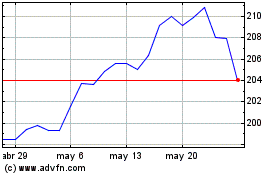Mercer, a business of Marsh McLennan (NYSE: MMC) and a global
leader in helping clients realize their investment objectives,
shape the future of work and enhance health and retirement outcomes
for their people, released results from its 2024 National Survey of
Employer-Sponsored Health Plans.
The survey found that the average per-employee cost of
employer-sponsored health insurance reached $16,501 in 2024, an
increase of about 5% year over year, with employers expecting an
increase of about 6% in 2025.
“Employers doubled down on strategies to manage cost growth
while finding ways to improve key benefits to support employees and
their families in 2024, including expanded coverage for GLP-1
medications and fertility treatments,” said Ed Lehman, Mercer’s US
Health Leader.
The fastest-growing component of health benefit cost continues
to be prescription drugs. Pharmacy benefit cost rose 7.7% in 2024,
following an increase of 8.4% in 2023. One driver of this spend is
the growing utilization of GLP-1 drugs for diabetes and weight
loss.
While nearly all health plans cover GLP-1 drugs for diabetes,
that is not the case for obesity treatment. However, in 2024,
coverage for obesity drugs rose to 44% of all large employers
(those with 500 or more employees), up from 41% last year. Of the
largest employers (20,000 or more employees), 64% now offer
coverage, up sharply from 56% in 2023.
“GLP-1 medications may turn the tide on the obesity epidemic and
positively impact downstream medical costs,” said Tracy Watts,
Mercer’s National Leader for US Health Policy. “Cost is clearly a
concern, and employers are adding authorization requirements to
ensure the medications are used by members who will benefit the
most.”
Employers are also managing the rising cost of specialty drugs,
including expensive gene and cell therapies for conditions such as
hemophilia and sickle cell disease. The most common strategy to
curb costs is working with medical carriers and pharmacy benefit
managers to implement clinical management programs for
patients.
Addressing affordability with more medical plan
choices
Concerns about affordability have led employers to add medical
plan choices that accommodate different financial and medical
needs. This year, 65% of large employers offered three or more
choices to employees, up from 60% in 2023, with the largest
employers providing an average of five options.
One lower-cost option is an Exclusive Provider Organization
(EPO) plan, which uses a closed provider network to help keep cost
down. In 2024, 12% of all large employers and 29% of the largest
employers offered an EPO option. Notably, about a third of these
plans do not require a deductible, which is rare among Preferred
Provider Organization (PPO) plans and not permitted for Health
Savings Account (HSA) eligible plans. Currently, 5% of all covered
US employees are enrolled in an EPO.
Promoting higher quality care
Many of the EPO plans offered by the largest employers (40%)
incorporate a high-performance provider network, in which providers
are selected based on quality and cost metrics, as do 10% of the
PPO plans. “By steering employees to providers of demonstrated
quality and cost efficiency, better outcomes and cost savings
result, a win for both employees and the plan sponsor,” said Ms.
Watts.
Another way to guide employees to higher quality, cost-efficient
care is by providing specialized health navigation or advocacy
services. Nearly half of all large employers (49%) have contracted
a specialized vendor or purchased enhanced services from their
health plan to provide assistance beyond standard customer
service.
Family-forming benefits
Coverage for fertility treatment is becoming increasingly
common, with in vitro fertilization (IVF) now covered by 47% of all
large employers, up from 45% last year. Of the largest employers,
70% cover IVF, up from 62%. Elective egg freezing and elective
sperm freezing are covered by 21% and 20% of all large employers,
respectively.
Most large employers offering fertility benefits (64%) say that
they are intended to be inclusive, meaning eligibility is not
limited to those meeting the clinical definition of infertile.
“Fertility benefits have become table stakes for employers wanting
to offer comprehensive, inclusive benefits,” added Ms. Watts.
Cancer support and other benefit enhancements
Employers are increasingly providing specialized support to
employees dealing with cancer, including prevention and early
detection campaigns, Centers of Excellence, case management,
caregiver resources and workplace support. Two-thirds of large
employers now provide at least one of these resources, with 20% of
the largest employers having a robust cancer strategy and another
24% actively developing one.
Virtual primary care, offering convenient, low-cost access to
physicians via text messaging, is a popular benefit that can
enhance healthcare accessibility. In 2024, 20% of all large
employers and 27% of the largest employers provided this
service.
About Mercer’s National Survey of Employer-Sponsored Health
Plans
Now in its 39th year, Mercer’s National Survey of
Employer-Sponsored Health Plans included 2,194 employers in 2024.
Results are weighted to represent all US health plan sponsors with
50 or more employees. Results are examined separately for employers
with 500 or more employees (“large” employers) and those with
20,000 or more employees (“largest” employers). The survey was
fielded from June 12 through August 16, 2024.
About Mercer
Mercer, a business of Marsh McLennan (NYSE: MMC), is a global
leader in helping clients realize their investment objectives,
shape the future of work and enhance health and retirement outcomes
for their people. Marsh McLennan is a global leader in risk,
strategy and people, advising clients in 130 countries across four
businesses: Marsh, Guy Carpenter, Mercer and Oliver Wyman. With
annual revenue of $23 billion and more than 85,000 colleagues,
Marsh McLennan helps build the confidence to thrive through the
power of perspective. For more information, visit mercer.com, or
follow on LinkedIn and X.
View source
version on businesswire.com: https://www.businesswire.com/news/home/20241120305316/en/
Media: Ashleigh Jang Mercer +1 212-345-3965
Ashleigh.Jang@mercer.com
Marsh and McLennan Compa... (NYSE:MMC)
Gráfica de Acción Histórica
De Dic 2024 a Ene 2025

Marsh and McLennan Compa... (NYSE:MMC)
Gráfica de Acción Histórica
De Ene 2024 a Ene 2025
